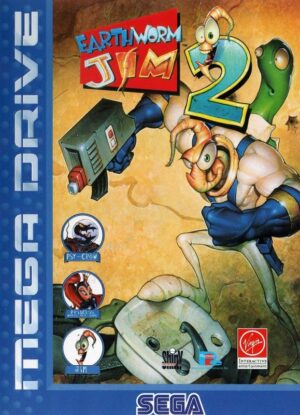Retro Replay Review
Gameplay
Firedragon’s core gameplay loop is deceptively simple: you guide a juvenile dragon horizontally across a stony ledge, using your mouse to control its position. The intuitive design means that within seconds of starting the game, you’ll instinctively know how to dodge incoming hazards and line up your fire shots. Every click launches a fireball straight upward, which you’ll use to melt ice-cube-encased fruits before they can harm you or slip past the platform’s edge.
(HEY YOU!! We hope you enjoy! We try not to run ads. So basically, this is a very expensive hobby running this site. Please consider joining us for updates, forums, and more. Network w/ us to make some cash or friends while retro gaming, and you can win some free retro games for posting. Okay, carry on 👍)
What begins as a leisurely warm-up quickly ramps up in intensity. Ice cubes start falling at a leisurely pace, giving you ample time to target and zap them, but the arrival of “bomb” fruits in special cubes changes the strategy entirely. When you hit one of these, all on-screen ice cubes vanish in one satisfying explosion, offering a momentary reprieve—but also setting you up for a potential scoring spree if you act quickly to collect the freed fruit.
The risk-and-reward mechanics are smartly balanced. If an ice cube touches your dragon, you lose one of three health points, but you can also let cubes pass by to focus on high-value targets—provided you keep an eye on the rising platform. Missing too many cubes will push that platform higher, shrinking your reaction window and ratcheting up the tension. This dynamic keeps every run engaging, whether you’re a casual player looking for a quick session or a competitive gamer chasing a new high score.
Graphics
Visually, Firedragon opts for a crisp, cartoon-inspired aesthetic that brings its titular creature to life without overwhelming you in detail. The juvenile dragon is rendered with bright colors and expressive animations: its wings flap in anticipation, and its head tilts eagerly whenever a new wave of ice cubes appears. These little touches give the game personality and make every click feel slightly more impactful.
The falling objects—the ice cubes and the fruits inside—are clearly distinguished by color and shape, ensuring there’s no confusion even when multiple items are on-screen. The ice cubes have a subtle, frosty sheen, while the fruits glow with warm hues once liberated from their icy prisons. When a bomb fruit is unleashed, the screen briefly flares in orange and red tones, making it easy to track which cubes will vanish in the explosion.
The background art is minimalist but effective, featuring layered rock textures and a gentle parallax effect that conveys depth without distracting from the action. Ambient effects—like drifting snowflakes and the occasional rumble from below—add to the atmosphere, making Firedragon feel alive even during its quieter moments. The result is a cohesive visual package that prioritizes clarity and charm over graphical flashiness.
Story
Firedragon doesn’t rely on an elaborate narrative; instead, it presents a straightforward premise that’s charming in its simplicity. You play as a young dragon entrusted with the duty of keeping dangerous ice cubes at bay—an allegory for growing up and tackling unexpected challenges. While there’s no deep lore or branching dialogue trees, the game’s premise is clear and serves as a vehicle for the core gameplay loop.
That said, there are hints of a playful backstory if you pay attention to the little details. The rock platform looks like part of an ancient dragon lair, and subtle environmental clues—like old scorch marks on the walls—suggest that bigger, more fearsome dragons once roamed these heights. This backdrop adds a layer of context to your simple task, making you feel like part of a grand tradition of dragon guardianship.
For players who crave a robust storyline, Firedragon may feel a bit light. There are no cutscenes or character-driven quests, nor are there unlockable journal entries or secret lore tomes to discover. However, the game’s focus on tight, satisfying mechanics means that the lack of an extensive narrative doesn’t detract from the experience—it simply shifts attention to the thrill of the moment-to-moment action.
Overall Experience
Firedragon strikes a commendable balance between accessibility and challenge. The mouse-driven controls are responsive, the objectives are immediate, and the game’s difficulty curve gradually introduces new elements—like bomb fruit—without overwhelming you early on. Whether you have five minutes or fifty, each session feels complete and rewarding.
Replayability is baked into the score-chasing design. Even after mastering the basic mechanics, you’ll find yourself experimenting with different approaches: focusing on survival, maximizing fruit collection, or timing bomb shots for maximum chain reactions. Leaderboards and local high-score challenges give you tangible goals to pursue, ensuring that Firedragon remains engaging long after the introductory levels.
In the crowded field of casual arcade-style games, Firedragon stands out thanks to its charming protagonist, crisp visuals, and finely tuned gameplay loops. It doesn’t pretend to offer a sprawling world or cutting-edge graphics, but it delivers on its promise of quick, satisfying dragon action. For anyone looking for an accessible yet challenging arcade romp, Firedragon is a fiery gem well worth adding to your collection.
 Retro Replay Retro Replay gaming reviews, news, emulation, geek stuff and more!
Retro Replay Retro Replay gaming reviews, news, emulation, geek stuff and more!



Reviews
There are no reviews yet.